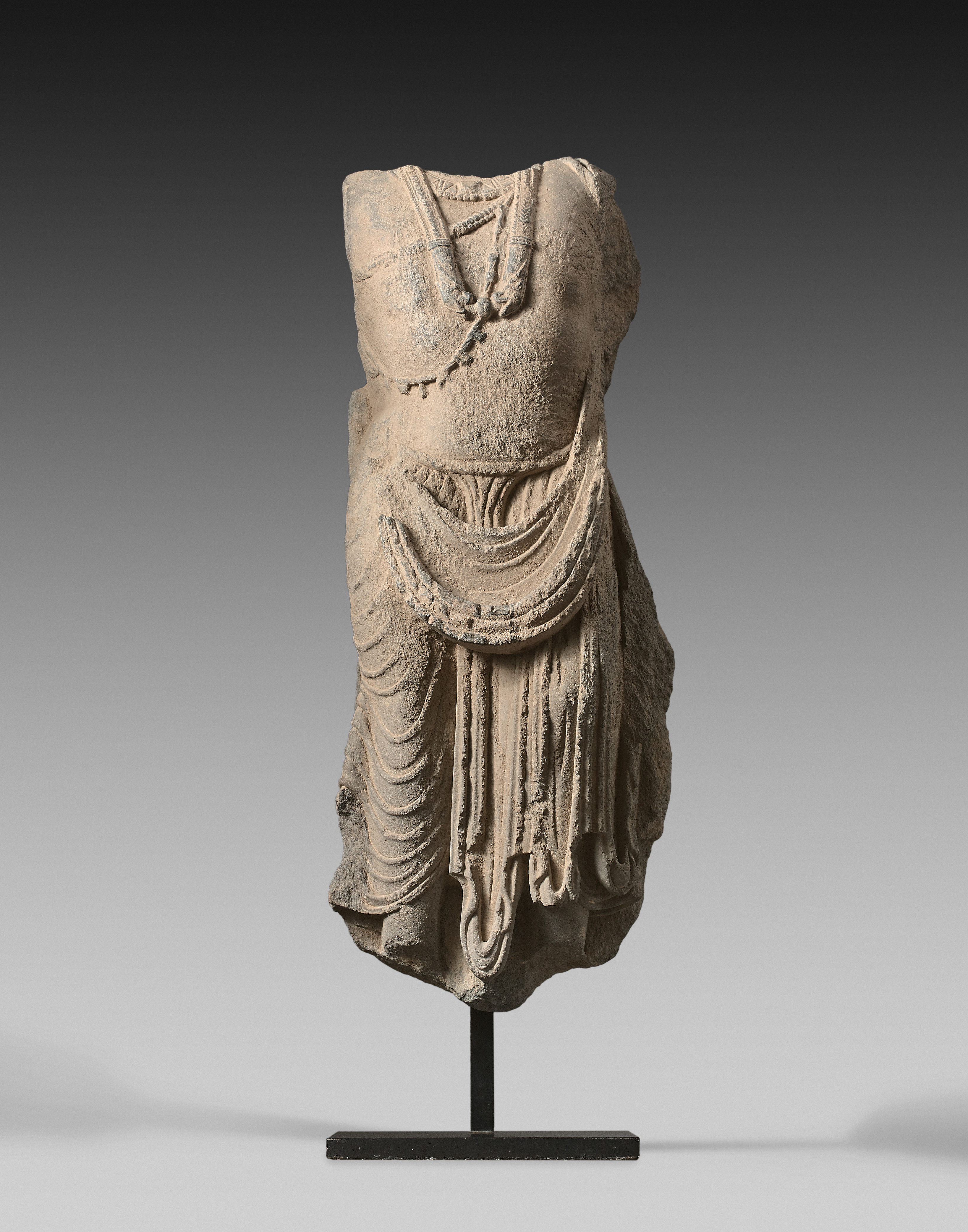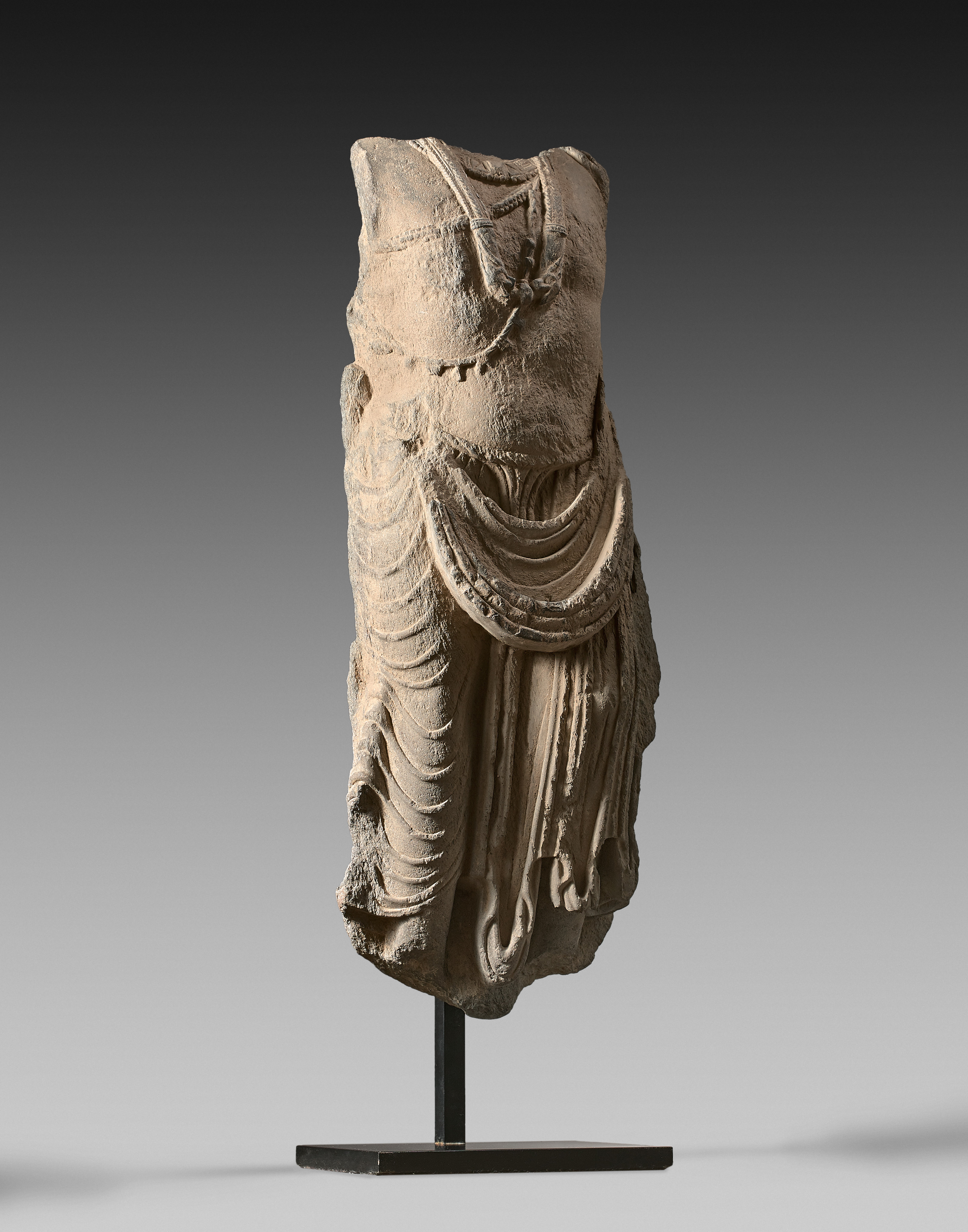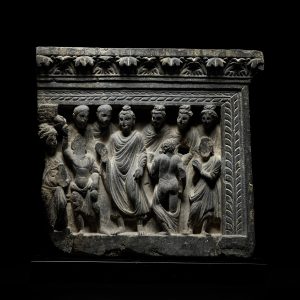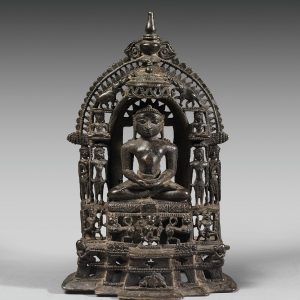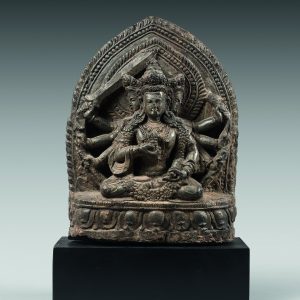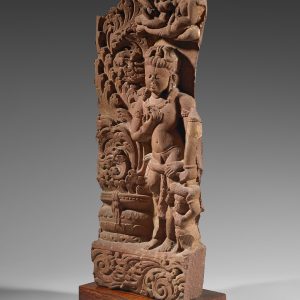Bust of Bodhisattva
Schist
Ancient region of Gandhāra (Northern Pakistan)
2nd – 4th century
H. 72 cm
Description
A spiritual being of primary importance
A major role in Gandharan iconography is played by bodhisattva, spiritual beings “promised to an Awakening”, a specific state of historical Buddha before their “Enlightenment”. They are depicted as royal figures because the Buddha himself was a prince before he renounced that life and finally achieved enlightenment. They cannot go backwards in the cycle of reincarnation, feel compassion for all sentient creatures of the earth and only wish to break free of the causal loop along with them. These characters have become one of the major specificities of the Buddhism of the Great Vehicle (Mahāyāna).
Princely ornaments and clothing
Sumptuous jewelry and drapes give Gandhāran bodhisattva a princely look, in the style of contemporary Kushan princes. These Kushan princes, who ruled the kingdom at that time, contributed with their donations to Buddhist monasteries.
So it is like a prince that this great standing bodhisattva wears the precious and characteristic Indian jewelry: A first large, flat, articulated necklace; a second longer necklace with a rich pectoral; a secondary chain with rectangular goldworked elements; and finally, the Brahman thread (upavīta) across the torso and bearing a series of small reliquaries. A long scarf that was wound around the left arm and shoulder rests in front shaping a drapery with vigorous folds, while the fabrics of the garment fall in points around the ankles. This elegance and complexity of the folds reinforces the noble appearance of this spiritual being and underlines the very subtle contrapposto imbued with naturalism.
Provenance: Private collection, France, acquired from Galerie Moreau-Gobard in 1984.
Art Loss Register Certificate, ref. S00143057

